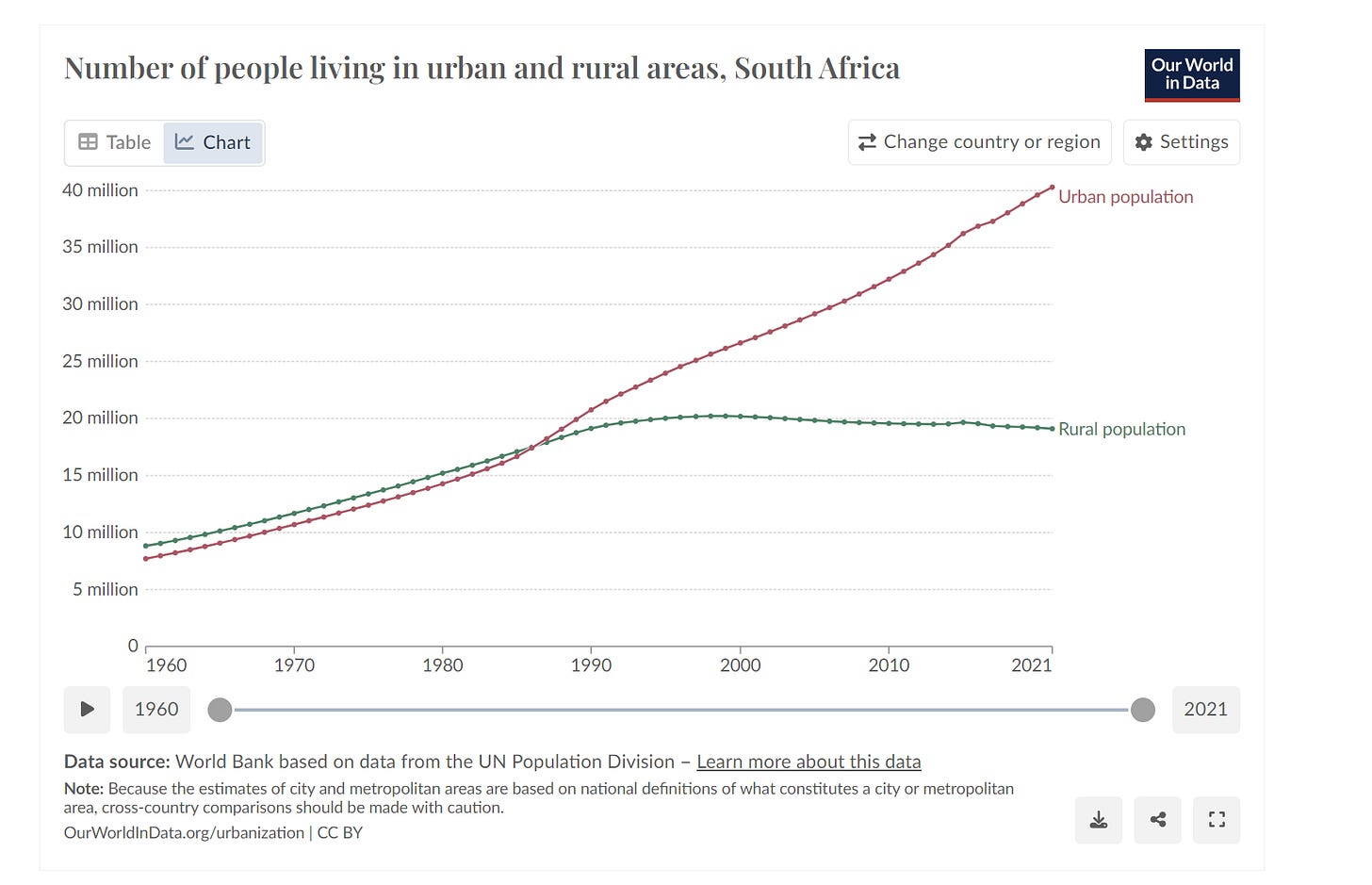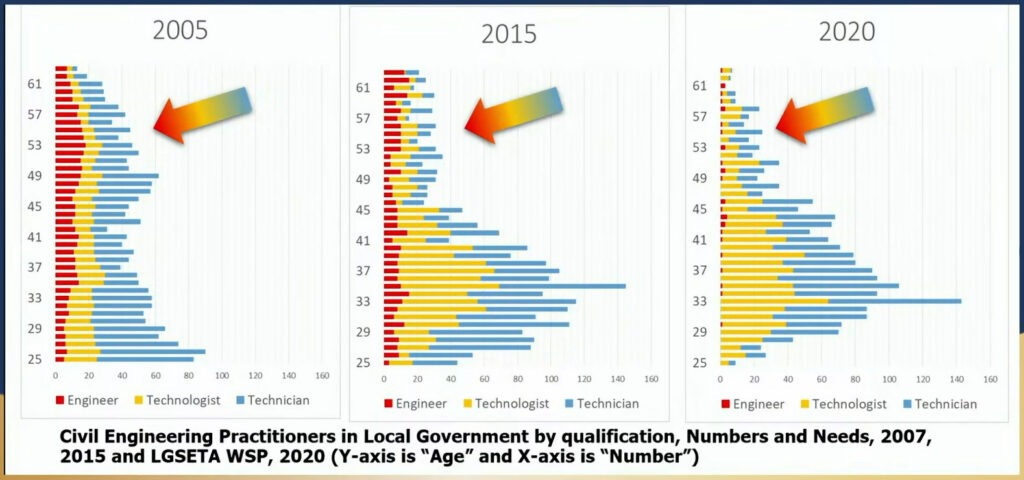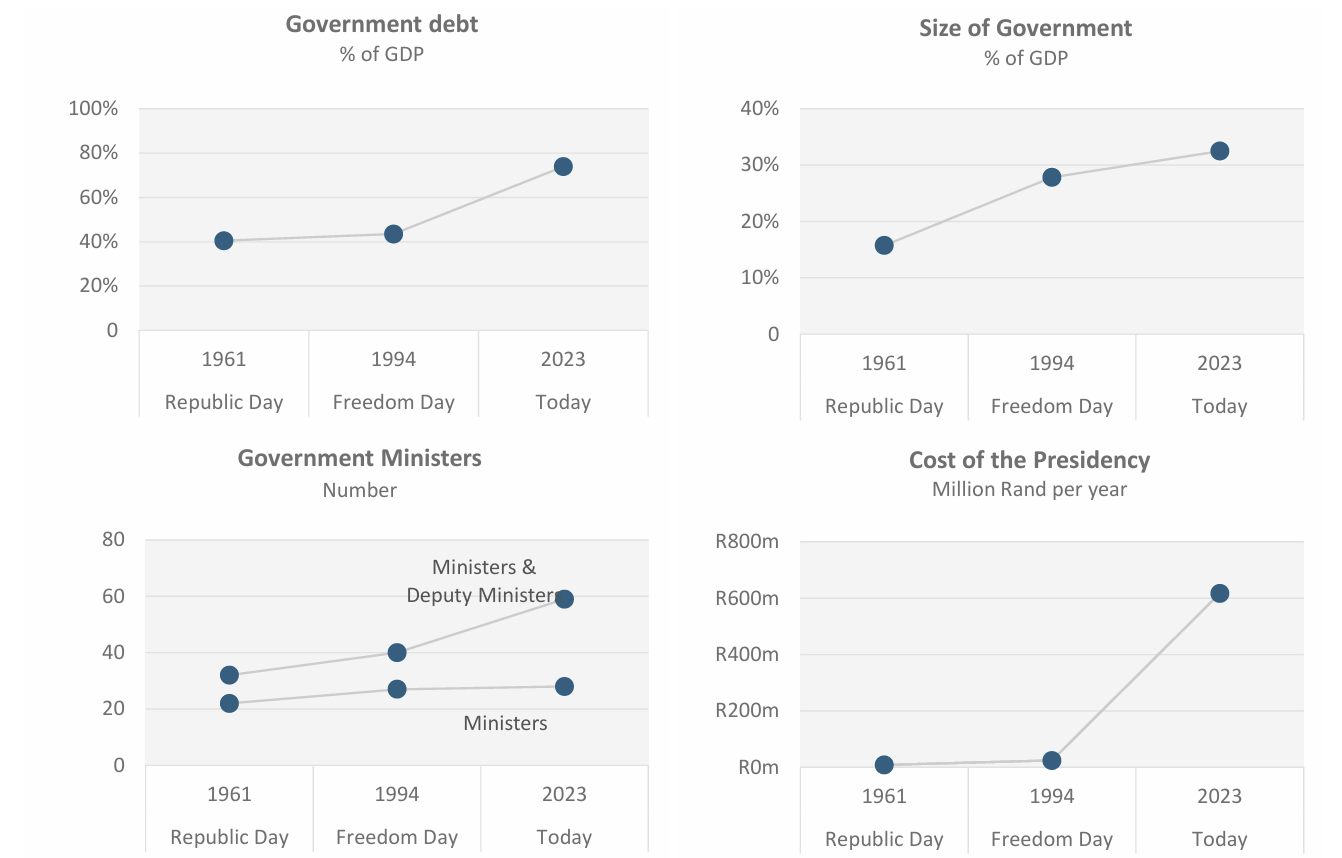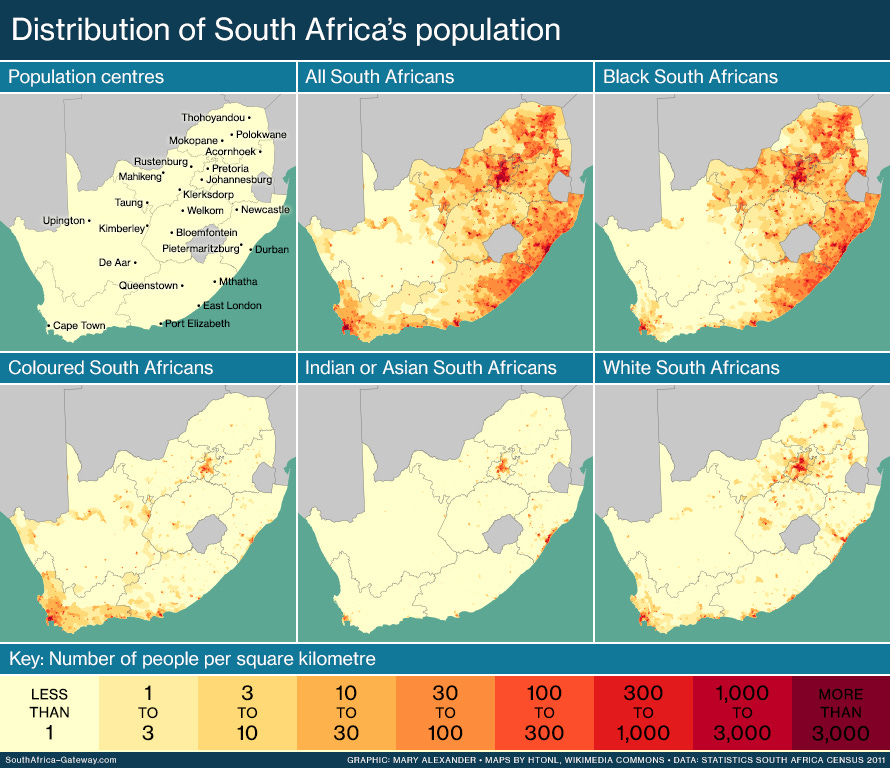On May 29th, 2024, South Africa will have its 6th democratic election, commemorating 30 years since the end of Apartheid.
This article aims to quantify South Africa's progress from 1994 to 2024. The period will be contrasted, in data, with the Apartheid Government's tenure from 1961 to 1994.
The selection of 1961 is chosen, because it signifies South Africa's transition to a Republic and the cessation of Queen Elizabeth's role as the head of state. It was the peak of the Apartheid Government’s power.
1994 is the year that Nelson Mandela became President and the beginning of the ANC government-led democracy.
The two periods are respectively 34 and 30 years long.
The data presented is sourced from newspaper articles, official sources, our world in data and elsewhere. No aggregate dataset is ever free of variation, so readers should take that into account1.
The onset of democratic rule was not (as was predicted) a disaster, but the country certainly didn’t live up to its potential.
Democratization
During the last 30 years South Africa has notably undergone significant changes in government, witnessed an expansion of civil and human rights, and an established constitutional order.
It's worth noting that South Africa's democratization process aligns with a broader global trend, albeit slightly lagging behind Spain and Portugal by only 10 years, and East Germany by only a few years.
Urbanization
Perhaps one of the most unmentioned trends is the coincidence of the collapse of the Apartheid government with South Africa's transition to a majority urban population. Nelson Mandela was released from prison around the same time that South Africa became a majority urban population2.
Unemployment
The rate of unemployment increased under ANC rule and the economy has been struggling to absorb the growing population. The unemployment rate is mostly from unofficial sources and must therefore be read in conjunction with the formal sector employment rate for which better numbers are available. The latter mirrors the “unofficial” unemployment rates and also indicate that the economy’s capacity to employ workers slowed since 1994 compared to the preceding period.
Economic Growth Trends
In his State of the Nation address on 8 February 2024, President Cyril Ramaphosa stated that the economy is three times larger than it was 30 years ago. However, based on data from Stats SA, the real gross domestic product (GDP) amounted to R2.3 trillion in 2015 prices, and by 2023, it had reached R4.6 trillion.
Simple division shows that the economy was actually only two times larger than it was 30 years ago. To put it differently, if the economy had truly grown threefold, the real GDP would have been R6.9 trillion, not R4.6 trillion, which falls short by about R2.3 trillion.
An economy growing three times larger over 30 years implies an average annual economic growth rate of 3.74%. However, there's been no significant reversal trend in GDP growth during the Apartheid sanctions era. In fact, the average annual economic growth rate worsened compared to the previous 34 years' average rate. Only in the four-year period from 2004 to 2008 did the economy manage to grow in excess of 5%, surpassing its potential growth rate. Economic theory and prudent policy suggest that during such periods, investment in infrastructure, among other measures, can foster sustainable economic growth without triggering inflation. Unfortunately, as we'll delve into later, this didn't materialize.
Moreover, the South African economy has seen a decline in international competitiveness, particularly following Jacob Zuma’s rise to power. This has led to a reduction in the number of companies listed on the JSE Stock exchange by more than half and a decrease in gold production.
Additionally, the value of the rand has deteriorated. In the 1960s, it was notably stronger than the dollar due to South Africa's leading position in gold production. However, our gold reserves have been declining regardless of the governing administration and throughout the new dispensation, the rate of decline has accelerated. In 2018, South African Gold became the most expensive to extract compared to other top tier producers.
Electricity
I've extensively discussed Eskom on this blog, and it's evident that the ANC's major failures lie in poor planning and a lack of foresight. The ideal time for investing in electricity generation would have been in the early 2000’s, but the lack of planning combined with strayed policy options to a large degree contributed to the weaker economic and employment performance.
Infrastructure in General
When taking a broader view of infrastructure, it’s clear that the decline that took place at Eskom was not unique to electricity supply. It has been a systemic failure.
South Africa faces the challenge of water scarcity, ranking as the 25th driest country globally. This was evident during the 2018 water crisis when Cape Town and its surrounding areas almost became the first large urban area of that scale to run out of water. Water restrictions are widespread in many urban centers, with residents in certain municipalities enduring prolonged periods without water. Despite these pressing issues, there has been minimal effort to enhance the country’s water capacity or maintain existing delivery systems. The lack of effective planning regarding dams and the overexploitation of catchment areas contribute to the problem.
Between 1964 and 1994, the South African government constructed 18 new dams that could store approximately over 200 million cubic metres of water. Between 1994 and 2023, it only built two such dams. Since 2014, South Africa has not built any large dams.
Furthermore, there has been no significant investments in new road infrastructure, and even then the desired outcomes have not materialized, leading to skyrocketing costs that was often related to tender bias. The proliferation of potholes poses a growing concern, with some private citizens taking it upon themselves to repair them at their own expense, only to face opposition from certain municipalities.
South African Airways, among the world's oldest airlines, took to the skies for its inaugural flight on 1st February 1934, predating many Western carriers. However, upon reaching its centenary milestone, it found itself in a state of collapse, attributed to mismanagement and burdens imposed by tenderpreneurs. Only through government bailouts has the effectively bankrupt airline managed to remain operational. This stands in stark contrast to Ethiopian Airlines, where the Ethiopian government acknowledges its direct competition with commercially agile and well-resourced companies in the global aviation markets.
Furthermore, the major seaports have been auctioned off due to the government’s inability to manage them to the extent that Mozambique is now outperforming us.
Skills flight
One would expect that the decaying infrastructure would bring an opportunity for engineers in particular. But unfortunately, South Africa has fewer qualified engineers permanently employed in local government today, than in 2005.
What is the root cause?
One might inquire about the root cause of all these issues, especially considering that the government is better financed with more staffed and pay than ever before. But more staff, and more pay, does not necessarily mean more efficiency as we have seen in the preceding analysis. To add some context. More than 55 000 employees earned more than R1 million per year in 2023 – meaning a cost of at least R55 billion – while the number of ministers and deputy-ministers increased by 50% and the budget of the President skyrocketed.
Certain trends are just blatantly absurd such as the Defense Force. If South Africa persists with the current trend, the ratio of generals to troops may soon fall below 100. Ideally, we shouldn’t aim for one general for approximately every 175 staff, which contrasts with a more efficient defense force where the ratio is 1 in 1500.
Natural trends, however, remain regardless of government intervention.
As depicted in several graphs, many trends that South Africans attribute to the ANC, whether positively or negatively, were actually ongoing irrespective of their governance. However, in certain instances, such as notably the expansion of infrastructure, their performance has been clearly inadequate.
As I always caution people interpreting data, it's important to remember that correlation does not imply causation. However, a correlation also does not mean there is no causation. If a plausible mechanism is discovered, then the hypothesis becomes more credible. Conversely, a lack of correlation may indeed lead to the rejection of the hypothesis.
When broken down by population sub-group, it becomes evident that the various population groups are not equally distributed. For instance, the 2011 census reveals that the black population was relatively evenly dispersed throughout the country.
The urban-rural dichotomy has played a significant role in shaping our political system.

















